I'm trying to make a MIDI Out circuit from the Sparkfun web page (https://learn.sparkfun.com/tutorials/midi-tutorial/all). My MicroController is a 3v3 device but I'm using two Not Gates as used in the sparkfun circuit, which are powered by a 5V rail.
Because I'm having difficulty with the generated output I created a MIDI input circuit to measure the voltages in an Oscilloscope. I'm not actually powering the MIDI input circuit I'm just using the standard input resistance, 220 Ohms, a diode and Optocoupler so that I can measure what's happening.
So that's my two circuits, my problem is that my MIDI Output circuit is not being recognised by either of my synths. I decided that I must be transmitting the wrong signal, hence my test MIDI Input circuit to measure voltages.
So for comparison I plugged a MIDI Controller Keyboard into my MIDI Input circuit and measured the resulting voltages, when I pressed a key. As a second example I used a Sequencer with a MIDI Output and send a Note On message to my MIDI Input circuit and measure that on the scope. Finally I tried the SparcFun circuit with two Not gates which I'd created. All three look exactly the same to me, well there are differences in the third byte, the attack parameter of the note on message.
So the tree waveforms I'm getting MIDI Controller, MIDI Sequencer and My MIDI Output based on SparcFun circuit:
So looking at those three outputs I'm struggling to understand why my output isn't being accepted or recognised by my MIDI Devices. The only thing I can think is that I'm not pushing enough current, but I'm powering my circuit off a bench top power supply pushing 9Volts into a 7805 Linear 5V which is creating the 5V Rail. In all cases the voltage is measured across the 220Ohm resistor in series with the input of an Optocoupler, so the Voltage drop across the input Optocoupler should be the same in three cases so the current through the 220 Ohm resistor should be the same in all three cases.
Be very grateful for any assistance or pointers, as to what's going on.




